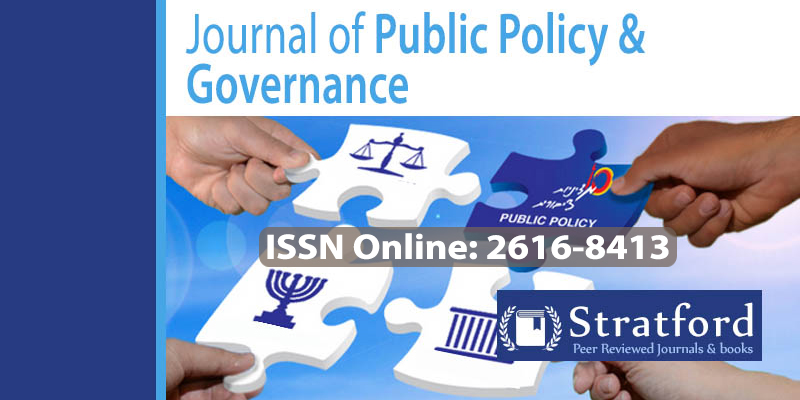Effects of Retirement Benefits on Organisational Performance in Kenya: A Case of Makueni County
DOI:
https://doi.org/10.53819/81018102t4099Abstract
Employees form the human capital factor in all organizations and symbolizes all human abilities irrespective of the inherent or learnt qualities, whose worth could be improved by suitable development investments. Organizations therefore need to ensure that they offer compensation and welfare packages that increase employee motivation. The motivation of employees increases when their needs which leads to increased productivity and efficiency in delivery of service. Achieving optimal performance in public service remain a challenge in Kenya. The study sought to evaluate the effect of retirement benefits on the performance of Makueni County Public Service. The social exchange theory guided the study. Out of the 3679 employees, proportionate stratified random sampling was used to identify 376 respondents and a semi-structured questionnaire was used to collect the primary data. Descriptive research design was used while descriptive statistics, specifically the mean and the standard deviation was used to analyse the data while inferential statistics was done by use of a regression model. The regression analysis showed that 45.3% of the organizational performance is was explained by availability of retirement benefits. The study concludes that retirement benefits have a positive significance correlation on organizational performance and the availability of these benefits boosts employees’ satisfaction and consequently their performance and that of the organization in general. The study recommends that County Government of Makueni should ensure an equitable provision of retirement benefits; train staff on the available retirement benefits and provide staff with options to choose from. The study recommends that the human resource directorate should conduct sessions with employees to identify the gaps in the staff retirement benefits and action on the recommendations.
Keywords: Retirement Benefits, Organizational Performance, County Government of Makueni
References
Agusioma, N. L. (2019). The Influence of Staff Welfare on Employee Performance at Public Service Commission in Kenya. Asian Journal of Business and Management, 7(5), 5-7. https://doi.org/10.24203/ajbm.v7i5.5967
Ajidagba, A. B. (2016). The impact of health insurance on employees’ productivity in an organization in Kwara State, Nigeria. International Journal of Current Research, 8(5), 31259-31264.
Babbie, A. R. (2011). Research Methods for Social Work. Cole Cengage: Belmont CA Brooks.
Bernardin, H. J. (2010). Human Resource Management: An Experiential Approach. Florida: McGraw-Hill.
Blumberg, C. a. (2011). Business Research Methods. Boston: McGraw Hill.
Board, M. C. (2013). HR Manual. Makueni, Kenya.
Christensen, J. (2017). Educational Research: Quantitative, Qualitative and Mixed Approaches. Los Angeles: Sage Publishers.
Demirbag, M. (2014). High-Performance Work Systems and Organizational Performance in Emerging Economies: Evidence from MNEs in Turkey. Management International Review, 53(4).
Denscombe, M. (2003). The Good Research Guide: For Small-scale Social Research Projects. Open University Press.
Dyer, L. (2006). Human Resource Strategies and Firm Performance: What Do We Know and Where Do We Need to Go? The International Journal of Human Resource Management.
Enoksen, E. (2012). Resource Theory of Social Exchange. Fao and Fao, 12.
Foa, E. B., & Foa, U. G. (2012). Resource theory of social exchange. In Handbook of social resource theory (pp. 15-32). Springer, New York, NY. https://doi.org/10.1007/978-1-4614-4175-5_2
Gelard, P., & Rezaei, S. (2016). The relationship between job motivation, compensation satisfaction and job satisfaction in employees of tax administration–a case study in Tehran. Asian Social Science, 12(2), 165-171. https://doi.org/10.5539/ass.v12n2p165
Government, M. C. (2017). Final Report Of The Performance. Makueni: Makueni County Government.
Grant, C. (2015). Understanding, selecting, and integrating a theoretical framework in dissertation research: Developing a 'blueprint' for your "house". Administrative Issues Journal Education Practice and Research, 2.
Haan, P. (2014). Longevity, Life-Cycle Behavior and Pension Reform. Journal of Econometrics, 582-601.
Jon M. Werner, R. L. (2009). Human Resource Development. Cengage Learning.
Joyce Mumbi Kamau. (2013). Work-Life Balance Practices on Employee Job Performance at Eco Bank Kenya. European Journal of Business and Management, 2222-2839.
Jung, H. a. (2015). The Impact of Employees’ Positive Psychological Capital on Job Satisfaction and Organizational Citizenship Behaviors in the Hotel. International Journal of Contemporary Hospitality Management, 1135-1156.
Kerlinger, F. N. (2000). Foundations of Behavioral Research. Orlando, . Florida: Harcourt College Publishers.
Kilimo, D. (2016). Determinants of Intrinsic and Extrinsic Rewards on Employee Performance in Kapsara Tea Factory Company Trans Nzoia County Kenya. Nairobi: Jomo Kenyatta University. https://doi.org/10.6007/IJARBSS/v6-i10/2363
Kivunja, C. (2018). Distinguishing between theory, theoretical framework, and conceptual framework: A systematic review of lessons from the field. International Journal of Higher Education, 7(6), 44-53. https://doi.org/10.5430/ijhe.v7n6p44
Lind, D. A. (2001). Statistical Techniques in Business and Economics. McGraw-Hill Higher Education.
Mensah, M. K. (2019). Can Welfare Management Affect Teachers’ Performance? European Journal of Training and Development Studies, 29-41.
Millan, J. M. (2013). Determinants of job satisfaction: a European comparison of self-employed and paid employees. Small Business Economics,, 670.
Mugenda, O. a. (2003). Research Methods, Quantitative and Qualitative Approaches. Nairobi: ATC.
Mwangi, G. (2017). A Qualitative Toolkit for Institutional Research. University of Massachusetts Amherst.
Ndinya, A. (2017). Application Of Gemba Kaizen’s Total Quality Managementprinciple On Employee Performance In Kenya Wildlife Service, Tsavo East National Park, Kenya. Voi: Taita Taveta University.
Olubusayo, H., Stephen, I. A., & Maxwell, O. (2014). Incentives packages and employees’ attitudes to work: a study of selected government parastatals in Ogun State, South-West, Nigeria. International Journal of Research in Business and Social Science (2147-4478), 3(1), 63-74. https://doi.org/10.20525/ijrbs.v3i1.87
Sekaran, U. (2010). Research Methods for Business: A Skill-Building Approach. Carbondale: Southern Illinois University.
Taherdoost, H. (2016). Sampling Methods in Research Methodology; How to Choose a Sampling Technique for Research. SSRN Electronic Journal, 5(2):18-27.
Victoria, M. M. (2015). Impacts of Pension Reforms on the Kenyan Pension Industry. European Scientific Journal, ESJ.
Vroom, V. H. (1964). Work and motivation. New York, Wiley.
Wilson, J. (2010). Essentials of Business Research. New Delhi: SAGE Publications India Pvt Ltd.
World Bank (2002), Making Devolution Work for service delivery in Kenya. Nairobi.
Zirra, C. (2019). The impact of fringe benefits on employee performance: A study of Nasco Group, Jos plateau state. Research Gate.


